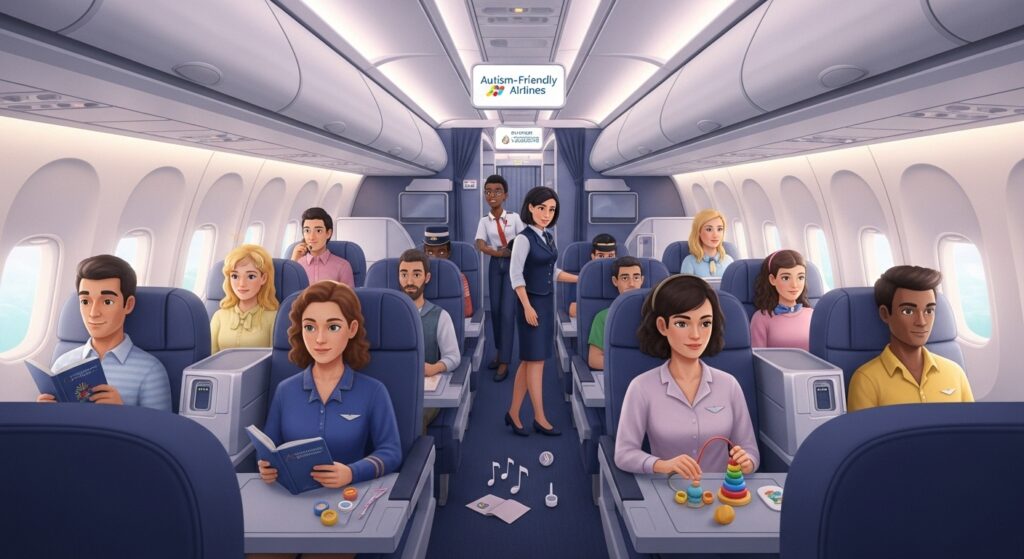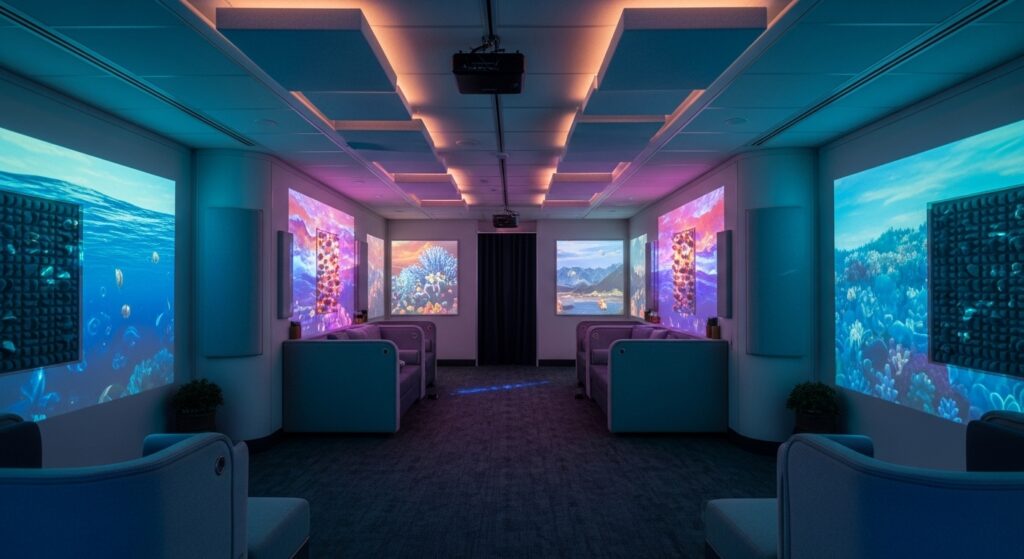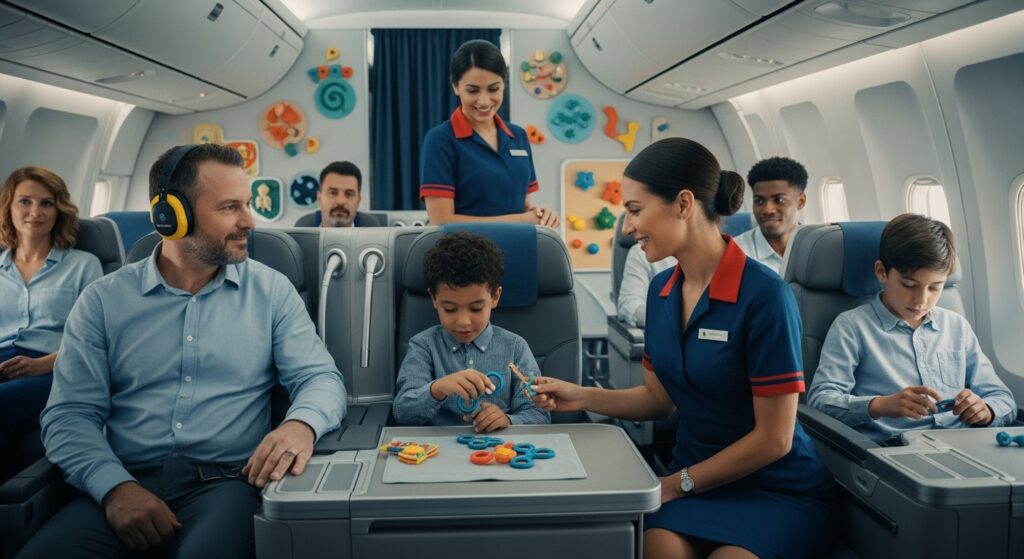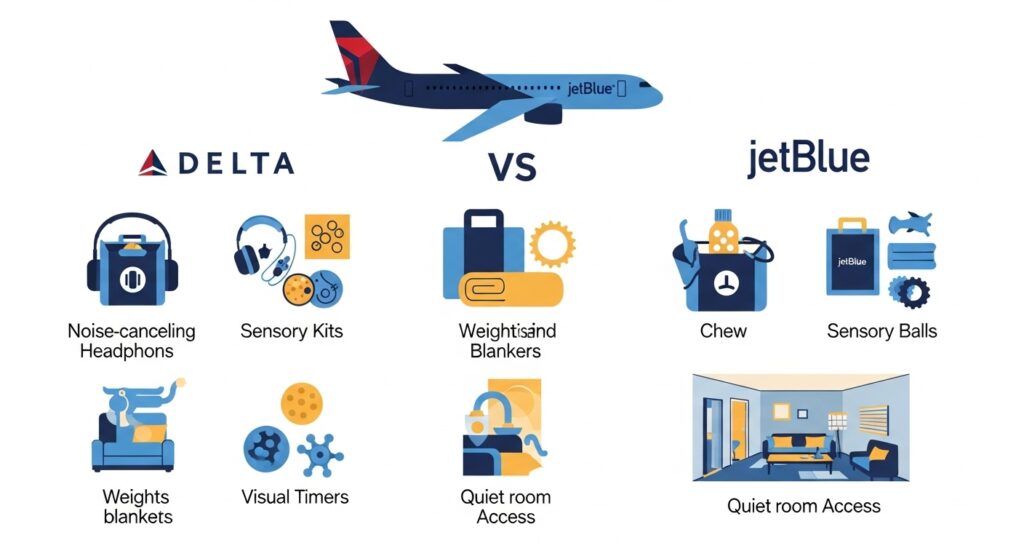Flying with a child on the autism spectrum can feel overwhelming. The crowds, noise, and unpredictable schedules make airports and planes tough places that can trigger sensory overload. But here’s the good news: airlines are stepping up their game with autism friendly airlines services that make travel much easier for families.
If you’re choosing between Delta and JetBlue for your next trip, you’re considering two airlines that have made impressive strides in autism accommodation. Both offer specialized programs, but they take different approaches to serving passengers with sensory sensitivities. Let’s break down exactly what each airline provides and help you decide which one fits your family’s needs best.
Why Autism Friendly Airlines Matter?
Before we dive into the comparison, it’s worth understanding why specialized autism support services are game changers for families. Traditional airport environments can be sensory nightmares with their bright fluorescent lights, constant announcements, crowds of people, and unpredictable waiting times.

For someone with autism spectrum disorder, these environments can trigger:
- Sensory overload from overwhelming stimuli
- Anxiety from unexpected changes in routine
- Difficulty processing information in chaotic settings
- Physical discomfort from noise and crowding
Autism-friendly airlines recognize these challenges and create solutions that address them directly. They’re not just checking boxes but genuinely working to make travel accessible and comfortable.
Delta Airline’s Comprehensive Autism Support Program
Multi-Sensory Rooms: Delta Airline Quiet Spaces
Delta Air Lines has invested heavily in creating quiet spaces specifically designed for passengers with sensory processing needs. Their multi-sensory rooms are available at key airports including:
- Hartsfield-Jackson Atlanta International Airport (ATL) on F Concourse
- New York-LaGuardia International Airport (LGA) in Terminal C
- Detroit Metropolitan Wayne County Airport (DTW) at Edward H. McNamara Terminal (opened in 2024)
These rooms aren’t just quiet spaces but thoughtfully designed environments that help passengers decompress and prepare for travel. The room, located in a quiet space on F Concourse, contains a mini ball pit, bubbling water sculpture, a tactile activity panel and other items children can interact with to help calm and prepare them for their travel experience.

What Makes Delta Airline’s Sensory Rooms Special?
Delta’s sensory rooms incorporate several evidence-based design elements:
Calming Visual Elements:
- Soft, muted color schemes instead of harsh airport lighting
- Gentle lighting that reduces visual overstimulation
- Peaceful artwork and decorations
Interactive Sensory Tools:
- Tactile activity panels for hands-on engagement
- Bubbling water features that provide soothing sounds
- Mini ball pits for proprioceptive input
- Mock airplane seating for practice and familiarity
Practical Features:
- Quiet environment away from airport noise
- Comfortable seating for families
- Easy access within airport terminals
Delta’s Additional Autism Services
Beyond sensory rooms, Delta offers comprehensive support including:
Pre-Flight Support:
- Cognitive disability assistance through specially trained staff
- Advanced notification options for passengers with developmental disabilities
- Complaint Resolution Officials (CROs) trained in disability regulations
In-Flight Accommodations:
- Priority boarding for passengers who need extra time
- Flexible seating arrangements when possible
- Patient, understanding crew members trained in autism awareness
Ground Services:
- Wheelchair assistance if needed
- Help with security and boarding processes
- Coordination with TSA for sensory-sensitive passengers
JetBlue Airline’s Wings for Autism Program
The Power of Practice: JetBlue’s Rehearsal Approach
JetBlue Airways takes a unique approach to autism support through their “Wings for Autism” program. For the past three years, the airline’s Boston crewmembers have volunteered their time to introduce the possibility of travel to children with autism spectrum disorder.
This program offers something incredibly valuable: practice runs that allow families to experience the entire travel process in a low-pressure environment.

How Wings for Autism Works?
JetBlue’s program includes:
Airport Rehearsal Sessions:
- Families can practice going through security
- Experience boarding procedures without time pressure
- Sit in actual aircraft seats
- Meet flight crew members in advance
Sensory Preparation:
- Exposure to airplane sounds and sensations
- Practice with safety demonstrations
- Familiarity with in-flight procedures
Family Support:
- Connection with other families facing similar challenges
- Educational resources about air travel
- Ongoing support from trained staff
JetBlue’s Quiet Room Access and Sensory Accommodations
While JetBlue doesn’t operate dedicated multi-sensory rooms like Delta, they focus on other autism-friendly accommodations:
Boarding Flexibility:
- Pre-boarding options for passengers with sensory sensitivities
- Extended boarding times when needed
- Flexible seating arrangements
In-Flight Support:
- JetBlue’s autism-friendly measures, such as sensory-sensitive pre-boarding and quiet rooms in airports, have significantly decreased reported instances of meltdowns and disruptive behavior during flights
- Crew training in autism awareness
- Understanding of sensory processing needs
Ground Services:
- Coordination with airport accessibility services
- Special assistance through security when needed
- Communication with ground crew about passenger needs
Comparing Delta vs JetBlue: Head-to-Head Analysis
| Feature | Delta | JetBlue |
|---|---|---|
| Dedicated Sensory Rooms | Yes at Atlanta, LaGuardia, Detroit | Partner with airport facilities |
| Pre-Flight Practice | Limited | Extensive Wings for Autism program |
| Sensory Kits | Available upon request | Available upon request |
| Crew Training | Comprehensive disability training | Autism-specific awareness training |
| Boarding Flexibility | Priority boarding available | Pre-boarding for sensory needs |
| Hub Locations | Major hubs with sensory rooms | Focus on East Coast locations |
Choosing the Right Airline for Your Family

When Delta Might Be Your Best Choice?
Delta’s strengths shine if you:
- Value having dedicated quiet spaces during layovers
- Travel through Atlanta, LaGuardia, or Detroit frequently
- Need comprehensive disability services beyond autism support
- Prefer a more traditional airline with extensive route networks
Delta’s sensory rooms are particularly valuable for:
- Longer layovers where your child needs decompression time
- First-time flyers who might benefit from the mock airplane setup
- Children who respond well to tactile sensory input
When JetBlue Might Be Perfect?
JetBlue’s approach works well if you:
- Want your child to practice flying before the actual trip
- Prefer a more personalized, smaller-airline experience
- Value the Wings for Autism community connection
- Travel primarily on the East Coast
JetBlue’s program is especially beneficial for:
- First-time flyers with autism spectrum disorder
- Families who want to build confidence through practice
- Children who benefit from routine and predictability
Making the Most of Autism-Friendly Services
Before You Book
Research Your Route:
- Check if your departure or connection airports have sensory rooms
- Verify which autism services are available on your specific route
- Contact the airline directly about your needs
Prepare Documentation:
- While not required, having documentation of your child’s needs can help
- Prepare a simple explanation of your child’s sensory sensitivities
- Consider bringing medical or therapy provider recommendations
During Travel
Arrive Early:
- Give yourself extra time to utilize sensory rooms
- Allow for flexibility in your schedule
- Plan for potential delays or changes
Communicate Clearly:
- Inform gate agents about your child’s needs
- Explain any specific sensory accommodations required
- Ask about quieter seating areas if available
Pack Smart:
- Bring familiar sensory tools and comfort items
- Include noise-canceling headphones
- Pack snacks and activities your child enjoys
The Future of Autism-Friendly Air Travel
Both Delta and JetBlue are part of a growing movement in the aviation industry. The room is designed to provide a calm, supportive and safe environment for individuals with sensory sensitivities or cognitive disabilities, and their families.
More airlines are recognizing that autism accommodation isn’t just about compliance but about creating better travel experiences for everyone. When airports are less stressful for families with autism spectrum disorder, they’re generally more pleasant for all passengers.
Making Your Decision
The choice between Delta and JetBlue for autism-friendly travel really depends on your family’s specific needs and travel patterns. If you value having dedicated quiet spaces and comprehensive disability services, Delta’s investment in multi-sensory rooms might be worth choosing your flights around. If you prefer the practice-based approach and community connection of the Wings for Autism program, JetBlue offers something truly unique.

Remember, both airlines are committed to serving passengers with autism spectrum disorder better than many competitors. Your choice might ultimately come down to practical factors like routes, schedules, and pricing, and that’s perfectly okay.
Planning Your Perfect Autism-Friendly Journey
Choosing the right airline is just the beginning of creating a successful travel experience for your family. At Travelohlic, we understand that every family’s needs are different, and we’re here to help you with the complexities of autism-friendly travel.
Our travel specialists have extensive experience working with families who have sensory processing needs, and we can help you:
- Compare autism services across different airlines
- Find the best routes with sensory room access
- Plan layovers that work with your child’s needs
- Coordinate with airlines for special accommodations
Don’t let the challenges of autism spectrum disorder keep your family from exploring the world. With the right planning and support, travel can be an enriching experience for everyone.
